Published
on 24
Nov 2023
|
All rights reserved.
|
|
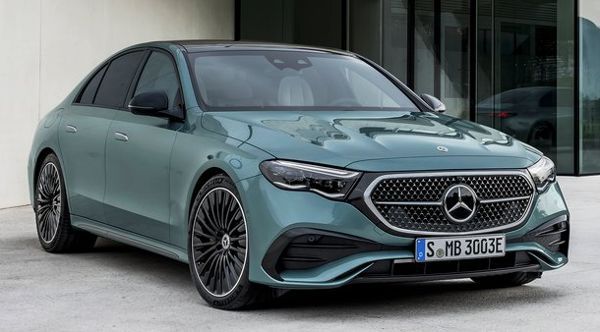 |
|
W214
is likely to be the last E-class powered by internal combustion
engines, or you might say, the last real E-class.
|
|
Some said this might be the
last generation E-class following Mercedes' commitment to going
all-electric by 2030. I am not too worry, because the E-class nameplate
is too valuable to abandon. Instead, I think the EQ-series nameplate
won't live beyond this generation. For sure the E-class nameplate will
continue, but it will be converted to pure electric and essentially a
development from the EQE. This means, the new W214 series is likely to
be the last E-class powered by internal combustion engines, or you
might say, the last real E-class.
Having learned that ICE won't live beyond 2030, you can understand why
Mercedes restricts its investment into the new E-class, builds it on
the existing MRA platform and carries over all the old 4 and 6-cylinder
engines. If you look for improved performance and excitement, look
elsewhere.
Naturally, the W214 is slightly larger again than its predecessor,
because it follows Mercedes' new strategy to migrate further upmarket.
Its 2961 mm wheelbase is an increase of 22 mm over its predecessor.
Likewise its 4949 mm length (+26 mm) and 1880 mm width (+28 mm).
Standard car keeps the 1468 mm height, but PHEV models are 12 mm taller
thanks to an extra 15 mm ride height. The longer wheelbase and extra
width boost cabin space a bit. Mercedes said rear passengers get 17 mm
more legroom and 25 mm more elbow room. The front passengers get 5 mm
more headroom.
The E-class continues to offer 2 distinctive grille designs. Exclusive
line comes with a traditional grille with a lot of chrome and a
3-pointed star sitting at the bonnet edge, while Avantgarde makes do
with a mesh grille in which a large 3-pointed star logo located. Both
grilles can be optioned with illuminated surround by means of optic
fiber. Too gimmicky for your taste?
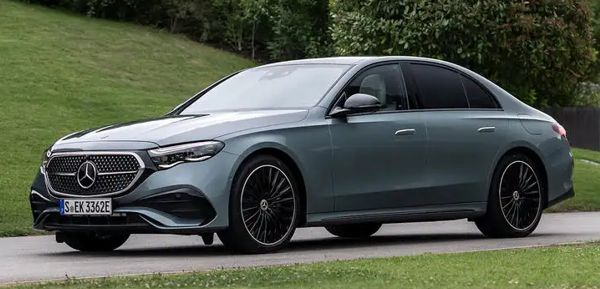 |
|
Still
looks graceful, like an 8/10th scale S-class.
|
|
Never mind, because the E-class still looks graceful, like
an 8/10th scale S-class. Playing Russian-doll game is not necessarily
bad, as it gives a strong family resemblance that sets it apart from
BMW, Audi or other rivals.
Despite a more streamline-looking shape, the W214 is no sleeker than
its predecessor in wind tunnel. Drag coefficient stays at 0.23, which
is still one of the smoothest cars in the world, although its frontal
area is slightly larger than before. This means it should consume
slightly more energy in cruising.
As the MRA platform is carried over, the press release wasted no time
in its aluminum-steel hybrid construction nor its unchanged suspensions
consisting of 4-link up front and multi-link setup at the back. Air
suspension and adaptive dampers are options, while rear-wheel steering
is the only new technology. We expect torsional rigidity of the chassis
to be slightly improved, otherwise the extra weight cannot be justified.
Yes, the new E-class gains quite a lot of weight. Massive even.
Remember an E300 weighed 1580 kg back in 2016? Now an entry-level E200
tips the scale at 1750 kg. If that shocks you, you'd better not to read
the spec. sheet of other models: E220d at 1840 kg, E300e at 2135 kg and
E400e 4matic at 2190 kg, all DIN scale. These are Bentley-level
figures. Admittedly, nameplates suffixed with an "e" employ plug-in
hybrid powertrains, whose 25.4 kWh (gross) battery is almost doubled
from the last generation.
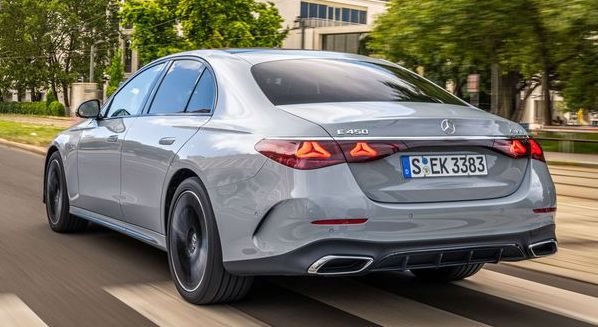 |
|
MRA
platform and powertrains are mildly updated from last gen, but kerb
weight rises considerably.
|
|
Speaking of PHEV, the electric motor incorporated in 9G-Tronic
transmission gets slightly more powerful at 129 horesepower and 324
lbft of torque. It allows the E-class to run up to 87 mph on battery
power and travel 69-73 miles (111-118 km) on WLTP cycles. Equally
important, it lends the E300e and E400e emission figures of only 12 and
14 g/km, respectively, pulling down the fleet average a lot. For
comparison, the petrol E200 and diesel E220d return 144 and 125 g/km,
respectively. Non-PHEV models are all equipped with 48V mild-hybrid
system by means of an ISG offering 23 hp and 151 lbft.
So the engine range on debut reads as below:
- E200: 2.0 turbo M254 4-cylinder petrol, 204 hp, 236
lbft, 149 mph, 0-60 in 7.1 sec.
- E220d: 2.0 turbo OM654M 4-cylinder diesel, 197 hp,
324 lbft, 148 mph, 7.2 sec.
- E300e: E200 engine + PHEV = 313 hp, 406 lbft, 147
mph, 6.1 sec.
- E400e 4matic: E200 engine boosted to 252 hp, 295 lbft
+ PHEV = 381 hp, 479 lbft, 155 mph, 5.0 sec.
Later on more powerful straight-six petrol and diesel models will join
the range in Europe. As for North America, 2 petrol models are
available from launch:
- E350 4matic: 2.0 turbo M254 4-cylinder petrol, 258
hp, 295 lbft
- E450 4matic: 3.0 turbo M256 straight-6 petrol, 381
hp, 369
lbft.
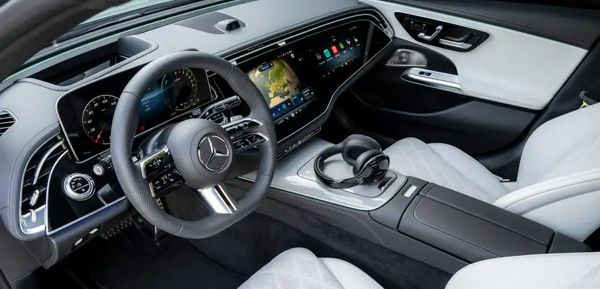 |
|
MBUX
runs Superscreen and a superb new OS. Materials quality a lot higher
than EQE. |
|
The interior of W214 shares a lot with the EQE, most notably
a 12.3-inch instrument display and optional "superscreen"
dashboard-covered infotainment system. The latter can be optioned with
a further 12.3-inch screen fore of the passenger. In standard guise the
dashboard is similar to the design found in the standard EQE, with a
14.4-inch portrait touchscreen mounted at the center console and the
rest of the dashboard is a blank surface. Configurable ambient lighting
surrounds the entire dashboard, making it a bit funky. However, while
material quality is disappointing in the EQE, it is top notch on the
E-class, because the ICE model does not need to recoup the cost of
battery from the cabin.
On the Road
The new cabin is really a strength of the E-class, as it feels both
comfy and advanced. On the one hand, the superscreen looks crisped and
works slickly. Mercedes’ MBUX infotainment system with new
inhouse-developed operating system makes debut here, offering gaming,
Webex/Zoom video conference and installation of apps. It all works
seamlessly, without the glitches that troubled many other European car
makers. On the other hand, the cabin feels expensive and spacious, just
as what you would expect on a Mercedes. The seats are nicely shaped,
and the rear bench offers plenty of legroom for tall passengers. The
sedan’s 540-liter boot is nearly class-leading, though PHEV model has
that slashed to merely 370 liters due to the placement of battery under
boot floor.
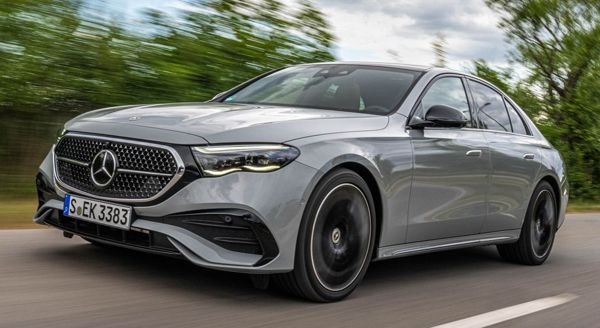 |
|
The
E-class' driving experience majors on comfort and refinement, and it
probably tops the class.
|
|
If you are after performance and handling, a BMW 5-Series
would serve you better. It is not to say the E-class slow or loosely
controlled. No, its suspension controls body roll respectably. There is
plenty of grip and the steering is precise and linearly weighted if not
overloaded with feel. But the Mercedes lacks the crisped turn-in and
final few degrees of control displayed by the BMW, nor its 4-cylinder
engines as eager as its rival’s. The 9G-Tronic transmission isn’t quite
as consistent as its ZF counterpart. The brake pedal feels a little
spongy.
What the Mercedes excels is comfort and refinement, which goes in line
with its traditional core values. Especially with Airmatic suspension
equipped, the ride is very smooth and quiet, no matter cruising on
highway or riding on low-speed potholes. Wind and tire noises are
remarkably low in the cabin. The engines are also refined, never feel
strained. The electric motor of E300e works imperceptibly with the
4-cylinder engine to deliver a seamless progress, and the absence of
engine noise at lower speeds guarantees superb refinement around town.
Naturally, the more spirited straight-six engine is our choice, but
neither the E200 petrol or E220d diesel feel out of place in the
E-class, as they deliver the long-leg refinement matching the chassis.
It might set new refinement standards for E-segment cars.
After the disappointment of EQE, it is nice to see Mercedes returns to
form with its traditional ICE model. The new E-class might not make
many breakthroughs, but it is a highly polished product that holds the
brand’s core values. Will it be the peak E-class? Let’s hope not, but
enjoy the last ICE-powered E-class while you can.
|
Verdict:     |
| Published
on 29
Jul
2024 |
All rights reserved.
|
|
AMG E53
|
|
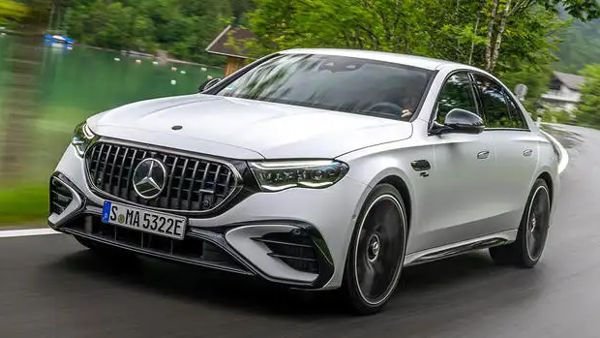
|
|
Ruined
by mass.
|
|
In
the world of performance luxury motoring, manufacturers are chasing
everything more – more grunt, more grip, more control, more luxury,
more comfort, more technology… unfortunately, this leads to also more
weight, more costs but not necessarily more fun to have. The latest AMG
E53 is a typical example.
A few years back, when the automotive world was in fever of
electrification, Mercedes set a bold goal of going entirely zero
emission by 2030. That pushed AMG to develop plug-in hybrid as a
transitional technology and equip all its upcoming models with it.
That’s why you see the E Performance-branded models of AMG GT63 4-door,
S63, C63, SL63 and GT63 made debut one after another. Most of them pair
the
existing V8 with electric motor and a heavy battery pack mounted over
the rear axle, while the smallest C63 opts for a 4-cylinder motor
instead of V8 that draws heavy criticism and results in sales flop.
Now the plug-in hybrid tech spreads to the second-tier AMG models
starting from the E53. It avoids the mistake of C63 by opting for M256M
3.0-liter straight-six engine, which is shared with the recent CLE53.
It features an electric supercharger and a larger exhaust gas turbo,
lifting output slightly to 449 horsepower and 413 pound-feet of torque.
However, while the CLE53 employs only a 48V ISG mild hybrid system, the
E53 makes do with a 163 hp and 354 lbft electric motor incorporated
into the transmission housing. Combined, the hybrid powertrain can
provide 585 horsepower continuously, or 612 hp on shorter bursts under
Race Start acceleration mode, matching the outgoing E63 S actually.
Putting so much power to the ground through four-wheel drive system,
the E53 is able to crack 60 mph from standstill in merely 3.7 seconds,
a massive 0.6 second quicker than its purely combustion predecessor,
even though the last E63 S is still a tad quicker.
It cannot match the last E63 S because it carries more weight. In fact,
at 2315 kg DIN, it is 430 kilograms more than the old performance
flagship!
Part of this is due to the fundamental problem of E-class W214, which
is slightly larger, more luxurious, more content-rich – just look at
that “Superscreen” and you’ll see how much more glass it carries. But I
suppose even more crucial is AMG decided to equip it with a larger
battery than the aforementioned E-Performance models. While they employ
6.1 kWh of battery – except S63 which uses 13.5 kWh – the E53 opts for
a much larger 28.6 kWh pack. Why? To give the car a 100km zero-emission
range which is crucial to taxation in some European countries. No
wonder the E53 does not carry the “E Performance” branding, because its
PHEV system is not optimized for performance.
Of course, when you gain hundreds of kilograms in the form of
batteries, motor and power electronics, you need also to upgrade the
chassis hardware to cope with. That’s why AMG equips the car also with
goodies like 4matic+, 4-wheel steering, larger brakes, some extra
bracings to strengthen its chassis and a wider front track. There are
also optional active engine mounts and active rear differential. All
these add further weight. On the flipside, a bit weight is saved by
ditching the air suspension in favour of new 2-valve adaptive dampers.
Weight aside, the PHEV conversion has other drawbacks. The battery robs
the boot by 170 liters, leaving only 370 liters. Price has
surges to an eye-watering £91,000 before options, actually the
same as the outgoing E63 S. Incredibly, this is supposed to be a
second-tier AMG model.
On the Road
There is nothing wrong with the straight-six engine. Of course its
power and sound are no match for AMG’s V8, it is far more enjoyable
than the 4-cylinder choice of C63. Power delivery is silky smooth and
linear across the rev range. The electric and ICE power combines in a
seamless manner, with the former complementing the latter’s weakness at
lower revs. The soundtrack is not magical, but at least authentic,
enhanced with some pops and crackles on overrun. However, the cultured
manner means the E53 doesn’t feel as quick as its 0-60 mph time of 3.7
seconds suggested. It is just satisfyingly quick, just as the E53 badge
implied.
In most cases, at least on smooth roads, the E53 controls its body
movement pretty well. Its 4matic+ and active differential offer good
traction and grip. The firm suspension tuning has its substantial mass
well contained. The active rear-wheel steering enhances agility at
slower corner, making you less aware of its inertia. The car prefers
flat roads and fast, consistent bends, where it feels planted and
predictable.
However, when the road surface gets bumpier, twistier and less
familiar, the clever electronics struggle to hide its mass. First you
will notice a stiff ride, especially on the optional 21-inch alloys and
30 percent aspect ratio tires. An E53 is not supposed to be that
hardcore, is it? Then, the combination of very light and numb steering
and over-eager steering response – some due to a quick ratio, some due
to the rear-wheel steering – makes its handling less predictable.
Sometimes you wind on lock and is surprised to find it steers more than
you expect, which hurts confidence. The brake pedal has a spongy
initial response, failing to blend regenerative and mechanical braking
seamlessly as some rivals do, again hurting your trust on the machine.
The body control also deteriorates on poorer surfaces. The more
challenging the road, the more obvious you feel the mass it is
suffering from. The result is very much like driving a big and powerful
SUV.
In the past decade or two, AMG rarely disappointed us. Unfortunately,
after C43 and C63, this is the third successive AMG model that draws
doubt
about their worthiness, or if AMG’s engineers still have that expertise
to make exciting cars. What’s wrong at Affalterbach lately?
|
Verdict:    |
|